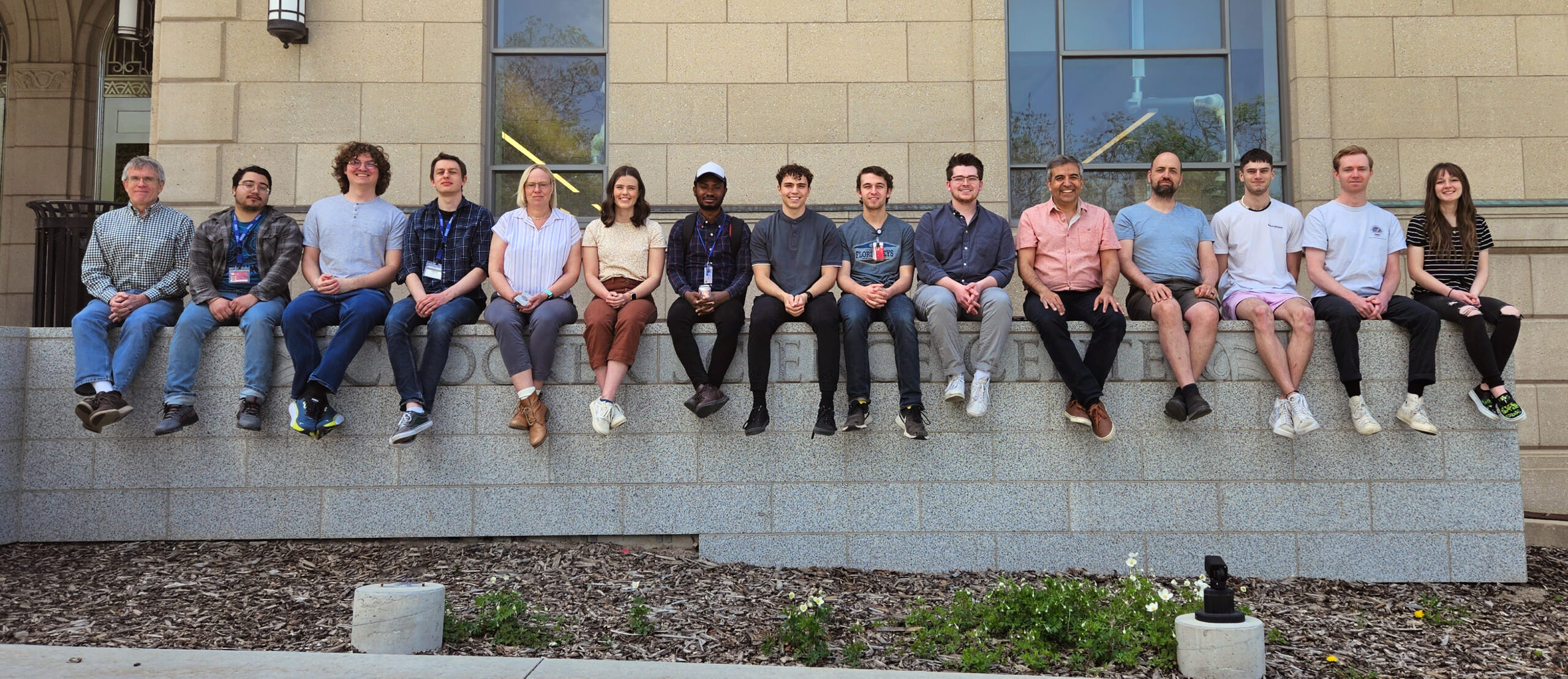ABOUT OUR LAB
Our lab focuses on enveloped RNA viruses including HIV, SARS-CoV-2 and VSV, mainly studying their assembly and replication. We also develop and use novel optical microscopy methods to visualize mechanism of viral replication in live cells.
Some of Our Recent Work
-
Minimal system for assembly of SARS-CoV-2 virus like particles.
SARS-CoV-2 virus is the causative agent of COVID-19. Here we demonstrate that non-infectious SARS-CoV-2 virus like particles (VLPs) can be assembled by co-expressing the viral proteins S, M and E in mammalian cells. The assembled SARS-CoV-2 VLPs possess S protein spikes on particle exterior, making them ideal for vaccine development. The particles range in shape from spherical to elongated with a characteristic size of 129 ± 32 nm. We further show that SARS-CoV-2 VLPs dried in ambient conditions can retain their structural integrity upon repeated scans with Atomic Force Microscopy up to a peak force of 1 nN.
-
Dynamics of the HIV Gag Lattice Detected by Localization Correlation Analysis and Time-Lapse iPALM
Immature human immunodeficiency virus (HIV) virions have a lattice of Gag and Gag-Pol proteins anchored to the lumen of their envelope. We performed iPALM imaging on immobilized HIV Gag-Dendra2 VLPs and demonstrate that we can localize and count 900-1600 Dendra2 molecules within each immobilized VLP with a single-molecule localization precision better than (10 nm)3. We further use our localization data to reconstruct time-lapse iPALM images of the Gag-Dendra2 lattice within the lumen of immobilized VLPs. The iPALM time-lapse images show significant lattice dynamics within the lumen of VLPs.
-
Interferometric fluorescence cross correlation spectroscopy
Measuring transport properties like diffusion and directional flow is essential for understanding dynamics within heterogeneous systems including living cells and novel materials.We present a method utilizing single photon interference and fluorescence correlation spectroscopy (FCS) to simultaneously measure transport of fluorescent molecules within aqueous samples. Our method, within seconds, measures transport in thousands of homogenous voxels (100 nm)3 and under certain conditions, eliminates photo-physical artifacts associated with blinking of fluorescent molecules.
-
Structural stability of SARS-CoV-2 virus like particles degrades with temperature
SARS-CoV-2 is a novel coronavirus which has caused the COVID-19 pandemic. SARS-CoV-2 is transmitted via airborne droplets ejected from the upper respiratory tract of the infected individuals. Here we have used atomic force microscopy to examine the structural stability of individual SARS-CoV-2 virus like particles at different temperatures. We demonstrate that even a mild temperature increase, commensurate with what is common for summer warming, leads to dramatic disruption of viral structural stability, especially when the heat is applied in the dry state.
-
Abrogating ALIX Interactions Results in Stuttering of the ESCRT Machinery
Endosomal sorting complexes required for transport (ESCRT) proteins assemble on budding cellular membranes and catalyze their fission. Using live imaging of HIV virions , we followed recruitment of ESCRT proteins ALIX, CHMP4B and VPS4. We report that the ESCRT proteins transiently co-localize with virions after completion of virion assembly for durations of 45 ± 30 s. We show that mutagenizing the YP domain of Gag which is the primary ALIX binding site or depleting ALIX from cells results in multiple recruitments of the full ESCRT machinery on the same virion (referred to as stuttering where the number of recruitments to the same virion >3).
-
High-speed imaging of ESCRT recruitment and dynamics during HIV virus like particle budding
Endosomal sorting complexes required for transport proteins (ESCRT) catalyze the fission of cellular membranes during budding of membrane away from the cytosol. Here we have used Total Internal Reflection Fluorescence (TIRF) microscopy to visualize the recruitment of ESCRTs specifically, ALIX, CHMP4b and VPS4 onto the budding HIV Gag virus-like particles (VLPs). We imaged the budding VLPs with 200 millisecond time resolution for 300 frames. Our data shows three phases for ESCRT dynamics: 1) recruitment in which subunits of ALIX, CHMP4b and VPS4 are recruited with constant proportions on the budding sites of HIV Gag virus like particles for nearly 10 seconds, followed by 2) disassembly of ALIX and CHMP4b while VPS4 signal remains constant for nearly 20 seconds followed by 3) disassembly of VPS4.
Saveez CSHL Retroviruses 2024
Ben CSHL Retroviruses 2024

Saveez CSHL Retroviruses 2023
Ben CSHL Retroviruses 2023
12th International Retroviral Symposium: Assembly, Maturation and Uncoating
Sept 6th-9th 2023 Snowbird Utah
Our Team


